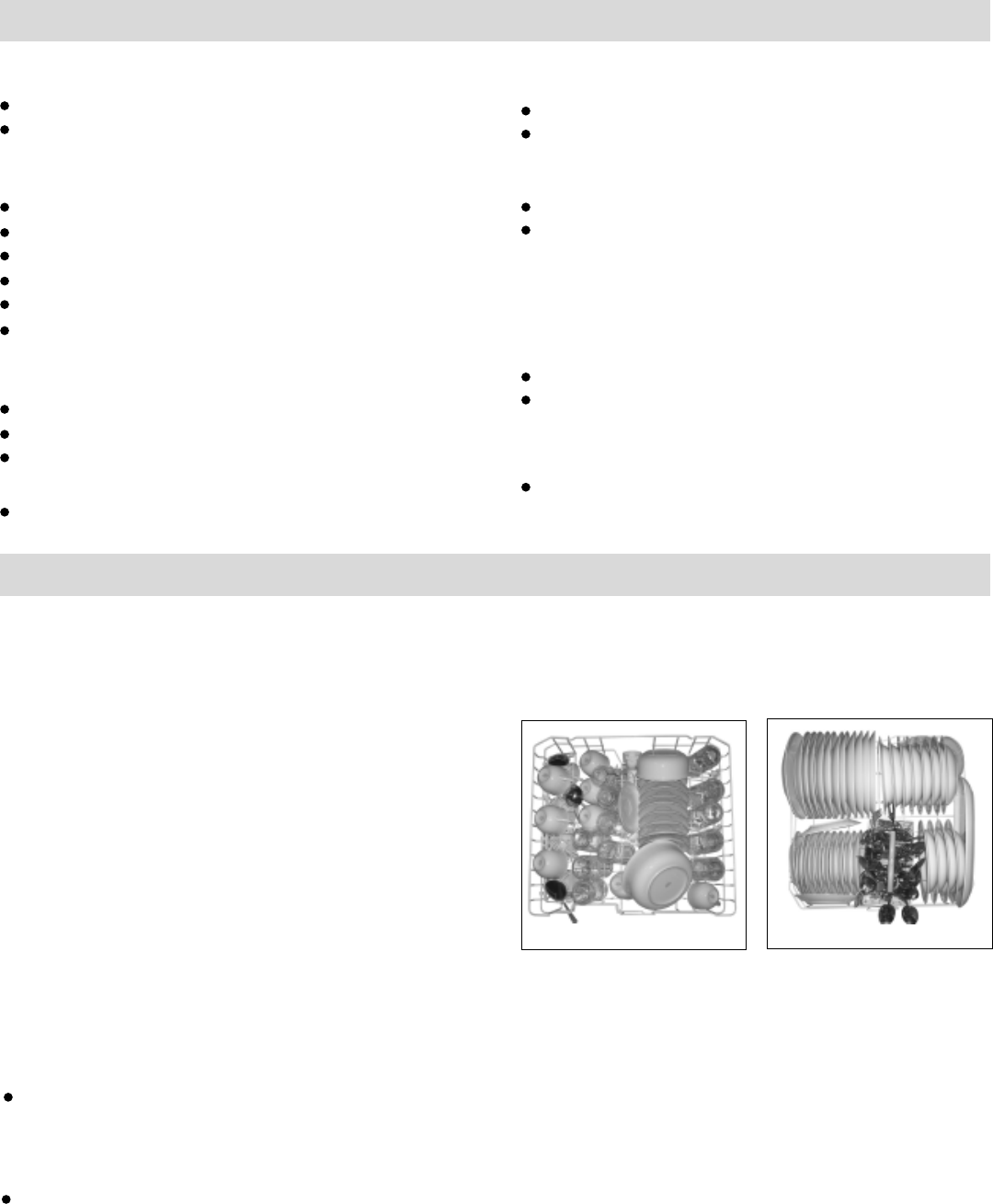
Detergent does not have a sufficient bleaching effect.
Washing temperature was set too low.
Tea stains or traces of lipstick have not been completely removed
Cutlery is not sufficiently rustproof.
Salt content in washing water is too high.
Traces of rust on cutlery
Unsuitable detergent was used.
Glasses are not dishwasher-proof.
Glasses become clouded and discoloured; coating cannot be wiped
off
Amount of rinse-aid set too high.
Smears left behind on glasses and cutlery; glasses have acquired
a metallic appearance
- Lid on salt container is not screwed tight.
- Too much salt was spilt while filling container.
Important information
Notes on waste disposal
Old appliances still have some residual value. An environment-friendly method
of disposal will ensure that valuable raw materials can be recovered and used
again.
When an appliance has reached the end of its working life,unplug it from the
mains.Cut through the mains cable and dispose of it together with the plug.
Destroy the door locking mechanism. This will ensure that children at play can-
not become locked inside and are not exposed to the risk of suffocation.
Your new appliance was protected by suitable packaging while it was on its
way to you. All materials used for this purpose are environment-friendly and can
be recycled. Please make a contribution to protecting the environment by dis-
posing of the packaging appropriately.
Do not allow children to play with any parts of the packaging. There is a risk of
suffocation by the cardboard boxes and the plastic wrapping.
Up-to -date information concerning options for disposal can obtained from your
retailer or local municipal administration.
General information
Measures must be taken to ensure that built-under and built-in units that
are subsequently re-sited as free-standing appliances cannot topple over.
This can be achieved by bolting the dishwasher to the wall or fitting it under
a continuous work surface which is screwed to the adjacent cupboards.
For Switzerland only:
There are no restrictions on installing the appliance between wooden or
plastic walls as part of a fitted kitchen. If the appliance is not plugged into a
wall socket, it must be connected to the mains via a separator for all poles
within the domestic wiring system. This device must have a gap of at least
3mm between open contacts, in order to conform with relevant safety
regulations.
Not enough detergent was added to dispenser.
Detergent has insuffcient bleaching properties. Use a detergent containing a
chemical bleaching agent.
Plastic items are discoloured
Amount of rinse-aid was set too low.
Glasses have a dull appearance
Selected programme did not include drying function.
Amount of rinse-aid was set too low.
Items were removed from dishwasher too soon.
Dishes,cultlery,etc.have not been dried
Not enough detergent was added to dispenser compartment.
Amount of rinse-aid was set too low.
Although water is quite hard, no salt has been put in appliance.
Water softener was set too low.
Lid on salt container is not screwed tight.
If you used a phosphate-free detergent , try a detergent containing phos-
phates and compare results.
White stains are left on crockery, glasses have a milky appearance
Information on loading the dish washer
9
EN
Below is an example on how to load this dish washer Figs 1-2.
Fig.1
Fig.2














